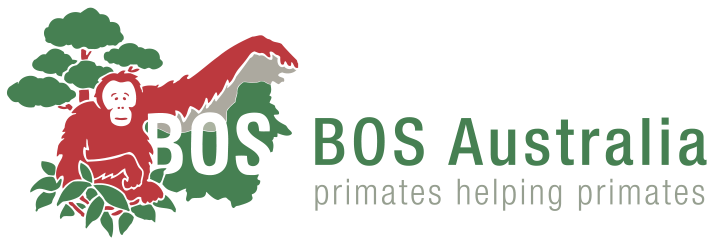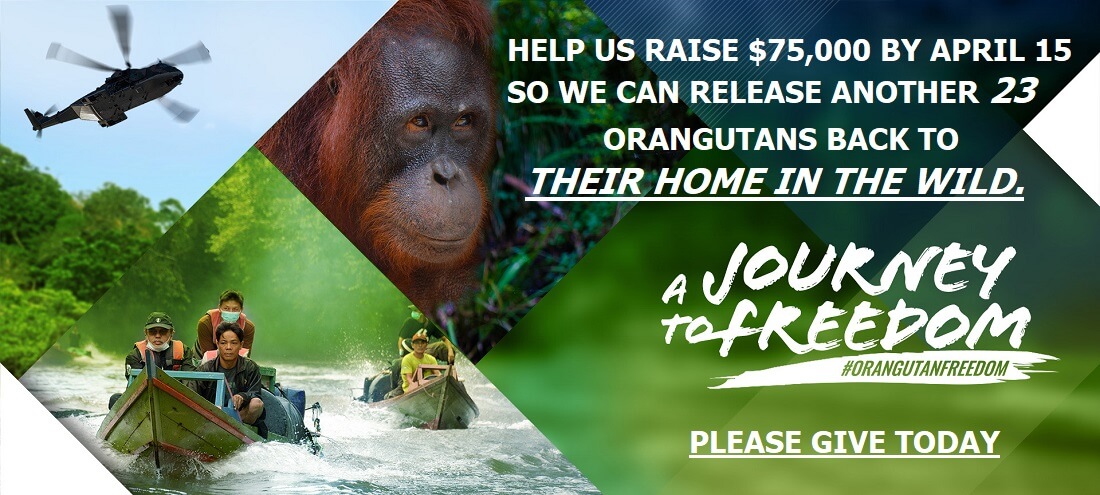The guilty secrets of palm oil
The guilty secrets of palm oil: Are you unwittingly contributing to the devastation of the rain forests?
The Independent: Martin Hickman: Saturday, 2 May 2009
Does your shopping basket contain KitKat, Hovis, Persil or Flora? If so you may be contributing to the devastation of the wildlife-rich forests of Indonesia and Malaysia, where orangutans and other species face extinction as their habitat disappears.
It’s an invisible ingredient, really, palm oil. You won’t find it listed on your margarine, your bread, your biscuits or your KitKat. It’s there though, under “vegetable oil”. And its impact, 7,000 miles away, is very visible indeed.
The wildlife-rich forests of Indonesia and Malaysia are being chain-sawed to make way for palm-oil plantations. Thirty square miles are felled daily in a burst of habitat destruction that is taking place on a scale and speed almost unimaginable in the West.
When the rainforests disappear almost all of the wildlife – including the orangutans, tigers, sun bears, bearded pigs and other endangered species – and indigenous people go. In their place come palm-oil plantations stretching for mile after mile, producing cheap oil – the cheapest cooking oil in the world – for everyday food.
It’s not that people haven’t noticed what is going on. The United Nations has documented this rampage. Environmental groups have warned that what we buy affects what is happening in these jungles. Three years ago, Britain’s biggest supermarket, Tesco, was persuaded to join the only organisation that just might halt the chopping, the Roundtable on Sustainable Palm Oil.
In his globe-trotting Tribe series two years ago, the TV explorer Bruce Parry was visibly moved by the sad fate of the Penan, a forest-dwelling tribe in Borneo. Most recently, the BBC’s prime-time Orangutan Diary showed the battle to create fresh habitats for “red apes” orphaned by deforestation, principally for palm oil.
But if there’s plenty of evidence of the devastating environmental effects of palm-oil, little of it can be seen on the products in Britain’s biggest supermarkets.
Until now, the best estimate of the number of leading supermarket products containing palm oil (Elaeis guineensis) has been one in 10, the figure quoted by Friends of the Earth in its 2005 report, “The Oil for Apes Scandal”. After a two-month investigation, The Independent has established that palm oil is used in far greater quantities. We can reveal for the first time that it is confirmed or suspected in 43 of Britain’s 100 bestselling grocery brands (see box, right), representing £6bn of the UK’s £16bn annual shopping basket for top brands. If you strip out drinks, pet food and household goods, the picture is starker still: 32 out of 62 of Britain’s top foods contain this tree-felling, wildlife-wrecking ingredient.
It’s in the top three loaves – Warburtons, Hovis, and Kingsmill – and the bestselling margarines Flora and Clover. It’s in Special K, Crunchy Nut Cornflakes, Mr Kipling Cakes, McVitie’s Digestives and Goodfella’s pizza. It’s in KitKat, Galaxy, Dairy Milk and Wrigley’s chewing gum. It’s in Persil washing powder, Comfort fabric softener and Dove soap. It’s also in plenty of famous brands that aren’t in the top 100, such as Milkybar, Jordan’s Country Crisp and Utterly Butterly. And it’s almost certainly in thousands of supermarket own brands. Yet none of these manufacturers can prove their supply is “sustainable”.
What, then, is “unsustainable” palm oil? Step one: log a forest and remove the most valuable species for furniture. Step two: chainsaw or burn the remaining wood releasing huge quantities of greenhouse gas. Step three: plant a palm-oil plantation. Step four: make oil from the fruit and kernels. Step five: add it to biscuits, chocolate, margarine, soaps, moisturisers and washing powder. At breakfast, when millions of us are munching toast, we’re eating a small slice of the rainforest.
From outer space, borneo and sumatra resemble giant emerald stepping stones between Thailand and Australia. Reaching the heart of their still-massive jungles takes days of boat trips and trekking. Gibbons hoot and long-tailed macaques squawk. Mongooses and pangolins scamper through the undergrowth. Large-beaked rhinoceros hornbills soar above the forest. The huge green and black Rajah Brooke’s butterfly flutters by.
These rainforests are honeypots for flora and fauna, among the most biodiverse places on Earth. Consider the figures. Sumatra – the size of Spain, owned by Indonesia – has 465 species of bird, 194 species of mammal, 217 species of reptile, 272 species of freshwater fish, and an estimated 10,000 species of plant. Borneo – the size of Turkey and shared between Indonesia and Malaysia – is even richer: 420 birds, 210 mammals, 254 reptiles, 368 freshwater fish and around 15,000 plants.
All these species evolved to live in this unique forest environment. The Sumatran rhino is the smallest, hairiest and most endangered in the world; the Sumatran tiger is the smallest tiger. The black sun bear, with its U-shaped patch of white fur under its chin, is the smallest bear. Some of them are curious in the extreme: the bug-eyed western tarsier; the striped rabbit; the marled cat; and the tree-jumping clouded leopard, which feasts on pygmy squirrels and long-tailed porcupines.
Of all the animals, though, the most famous by far is the orangutan (or “man of the jungle”). With its orange hair and long arms, the orangutan is one of our planet’s most unusual creatures. And one of the smartest, too. The Dutch anthropologist Carel van Schaik found that orangutans could perform tasks which were well beyond chimpanzees, such as making rain hats and leakproof roofs for their nests.
The primatologist Dr Willie Smits estimates that orangutans can distinguish between 1,000 different plants, knowing which ones are edible, which are poisonous, and which cure headaches. In her book Thinkers of the Jungle, the psychology professor Anne Russon recalled that one orangutan keeper took three days to solve the mystery of who’d been stealing from the fridge. It turned out that an orangutan had been using a paperclip to pick the lock of its cage, then hiding the paperclip under its tongue.
Along with chimpanzees, gorillas and bonobos, orangutans are great apes, sharing 97 per cent of their DNA with humans, having split from us a mere 13 million years ago. They exist only in these forests of Borneo and Sumatra, and it is their arboreal nature that leaves them so vulnerable to deforestation. Between 2004 and 2008, according to the US Great Ape Trust, the orangutan population fell by 10 per cent (to 49,600) on Borneo and by 14 per cent (to 6,600) on Sumatra. As the author Serge Wich warned: “Unless extraordinary efforts are made soon, it could become the first great-ape species to go extinct.”
Native people too, known in Borneo as Dayaks, are under threat. About 10,000 members of the semi-nomadic Penan tribe survive but their traditional lifestyle – which includes harvesting the starchy sago tree – is being felled.
A researcher with Survival International, the London-based human-rights organisation, returned to the UK last month with transcripts of interviews with the Penan conducted deep in the jungle. According to one headman, called Matu, hunters were increasingly returning empty-handed.
“When the logging started in the Nineties, we thought we had a big problem,” he complained. “But when oil palm arrived [in 2005], logging was relegated to problem No 2. Our land and our forests have been taken by force.
“Our fruit trees are gone, our hunting grounds are very limited, and the rivers are polluted, so the fish are dying. Before, there were lots of wild boar around here. Now, we only find one every two or three months. In the documents, all of our land has been given to the company.”
“There were no discussions,” said another Penan. “The company just put up signs saying the government had given them permission to plant oil palm on our land.”
Indonesia is trying to crack down on illegal foresting, but corruption is rife hundreds of miles from Jakarta. Satellite pictures show logging has encroached on 90 per cent of Borneo’s national parks – and according to the United Nations Environment Programme (UNEP): “New estimates suggest 98 per cent of [Indonesia’s] forest may be destroyed by 2022, the lowland forest much sooner.”
In its 2007 report, “The Last Stand of the Orangutan”, UNEP warned that forest rangers were outnumbered and outgunned by logging guards with military training and automatic weapons – and faced “high and sometimes lethal risks” in confronting them. The programme’s executive director Achim Steiner wrote: “The driving forces are not impoverished farmers, but what appears to be well-organised companies with heavy machinery and strong international links to the global markets.”
In its own way, palm oil is a wonder plant. Astonishingly productive, its annual yield is 3.6 tonnes a hectare compared with half a tonne for soy or rapeseed. Originally found in West Africa, palm oil is uniquely “fractionable” when cooked, meaning its properties can be easily separated for different products. Although high in artery-clogging saturated fat, it is healthier than hydrogenated fats. For manufacturers, there is another significant benefit. At £400 a tonne, it is cheaper than soy, rapeseed or sunflower.
Some 38m tonnes of palm oil are produced globally, about 75 per cent in Malaysia and Indonesia. Borneo’s 11,000 square miles of plantations produce 10m tonnes a year while Sumatra’s 14,000 square miles yield 13m tonnes.
Since 1990, the amount of land used for palm-oil production has increased by 43 per cent. Demand is rising at between six and 10 per cent a year. China’s billion-plus population is the biggest consumer, importing 18 per cent of global supply. About 16 per cent arrives in the EU.
In the UK, almost every major food manufacturer uses palm oil, among them Kellogg’s, Cadbury, Mars, Kraft, Unilever, Premier Foods, Northern Foods and Associated British Foods (ABF). Companies typically say they are working to source sustainable supplies – and insist their use is “small”, “very small” or “minute”.
The US household giant Procter & Gamble, which uses palm oil in detergents, shampoos and soaps, says: “P&G uses very little palm oil – about 1 per cent of a worldwide production of palm and its derivatives.” One per cent of global production is 380,000 tonnes a year. P&G says it hopes to source a sustainable supply by 2015 – six years’ time.
Right now no multinational can vouch that its supply is sustainable. The Anglo-Dutch household giant Unilever, the world’s biggest user of palm oil, is swallowing up 1.6m tonnes a year, 4 per cent of global supply. It admits the product causes huge damage, but believes it has a solution. Together with the World Wildlife Fund (WWF), Unilever set up the Roundtable on Sustainable Palm Oil (RSPO) in 2004. For its first four years – to the frustration of green groups – the RSPO talked, devising eight principles and 39 practical criteria designed to protect native peoples, plantation workers, small farmers and wildlife.
Forty per cent of palm-oil suppliers are now members of the RSPO and it hopes all of them will eventually join. Members promise not to chainsaw any virgin forest; but they are still allowed to chop down “degraded forest” – where some trees have been felled – preventing other trees from re-growing and animals from returning.
Palm-oil plantations are barren places. When vast blocks of palms are planted in straight lines, stretching for mile after mile, 90 per cent of the wildlife disappears. In the words of Junaida Payne, of WWF Malaysia’s Sabah office, they are “biological deserts”.
Jan Kees Vis, Unilever’s director of sustainable agriculture and chairman of the RSPO, says it is “not realistic” to halt palm-oil expansion, but believes much growth can be achieved by raising yields. The best plantations currently yield 10 tonnes per hectare, but in the future this could hit 18 or even 50 tonnes, he says.
The best plantations can obtain RSPO certification for sustainability – but only 4 per cent of global supply (1.5m tonnes) is currently certified sustainable. The first shipment arrived in Rotterdam last November and costs about 35 per cent more than normal supplies. Another scheme, Green Palm, is already bringing prices for RSPO supplies down further, adding just 5 per cent to the cost.
Unilever has publicly committed to sourcing only certified palm oil by 2015. Premier Foods has a date of 2011, United Biscuits 2012. Most companies, however, including Cadbury, Kellogg’s, Nestlé, Mars and Heinz, have given no commitment to switch to an RSPO-certified supply. They merely say that their suppliers are members.
As Vis puts it bluntly: “The volume of certified palm oil traded is disappointingly low so far; the reason for this being that many companies are not prepared to pay a premium for certified oil.”
Environmentalists fear that the RSPO is itself greenwash, cover for a programme of vicious and unrelenting deforestation. Even the RSPO concedes that its members have subsidiaries who plant palm oil, and who are not bound by – and do not abide by – its rules.
As if this were not enough, in the rush to replace diminishing fossil fuel, palm oil is being mixed into petrol. The EU Biofuels Directive aims to put biofuels in 5 per cent of all fuel pumps. Destroying peat forests for palm oil is especially bad for the climate, as these semi-saturated soils are dense “carbon stores” which release colossal quantities of C02 when they are burnt to make way for palm oil.
In its “Cooking the Climate” report, Greenpeace calculated that the burning of South-east Asia’s peat forests – largely for palm-oil plantations – spewed 1.8bn tonnes of greenhouse gas into the atmosphere: 4 per cent of global climate-change emissions from 0.1 per cent of Earth’s land. According to Greenpeace forest campaigner James Turner, “The destruction of these forests is a really serious cause of climate change, but some companies are still trying to look the other way. It’s time for them to cancel contracts with the worst suppliers, because purchasing power is a highly effective tool in changing this industry.”
Conservationists are increasingly wondering whether the wholesale destruction of rainforests to make margarine is the most striking of all examples of environmental lunacy. It isn’t just destroying one of the last great wildernesses, its rare animals and some of the remaining people whose ways are at odds with modern living. It also threatens to damage our own lives in the West.
Deforestation causes 18 per cent of Co2 emissions, according to British government figures – a key element in the rising temperatures that in coming decades will alter our world for ever. No one can be exactly sure what climate change will bring but, in Britain, we can expect more flooding and winter gales, drier summers, water shortages, and more food poisoning and skin cancer. The sea will not just sweep over Bangladesh and the Maldives, but possibly threaten low-lying parts of Britain, such as London, too. Meanwhile, millions of people in developing countries with failing agriculture could migrate to northern Europe.
The wealthy Western countries who have already felled their own forests (woods once covered Britain from Cornwall to Caithness) may have to pay more and more to protect those that remain in other parts of the world. At the Copenhagen summit in December, Britain and other countries will press for REDD (Reducing Emission from Deforestation and Degradation) – essentially a scheme for funding jungles in developing countries.
In the meantime, forest campaigners hope that big companies will come under increasing scrutiny over palm oil. The Unilever-backed RSPO wants them to commit to a sustainable supply. Friends of the Earth and Greenpeace say palm-oil use should be reduced or phased out altogether. A few have already done so – PepsiCo, for instance, is phasing out palm oil from its remaining two products. United Biscuits says it has reduced palm oil in Digestives by 65 per cent and in McCoys by 76 per cent since 2005.
So far, companies have managed to avoid much scrutiny over the havoc palm oil is wreaking. For now, it is “only” the native peoples, the orangutans and the other animals of the rainforest who have experienced the most profound changes. They are losing the habitat that they thought would be around for ever.
“When I was a young girl I used to be so happy walking in the forest,” one Penan woman told Bruce Parry after trekking overnight to pass on her message. “I used to sing while I was looking for sago. I loved to hear the sound of the wild peacocks, the hornbills and the gibbons, and when I looked at the forest it was lovely.”
Palm oil facts
- 90 per cent of Sumatra’s orangutan population has disappeared since 1900. They now face extinction
- 90 per cent of wildlife disappears when the forest is replaced by palm, creating a biological desert
- 98 per cent of Indonesia’s forests may be destroyed by 2022 according to the United Nations
- 43 of Britain’s 100 top grocery brands contain or are thought to contain palm oil





